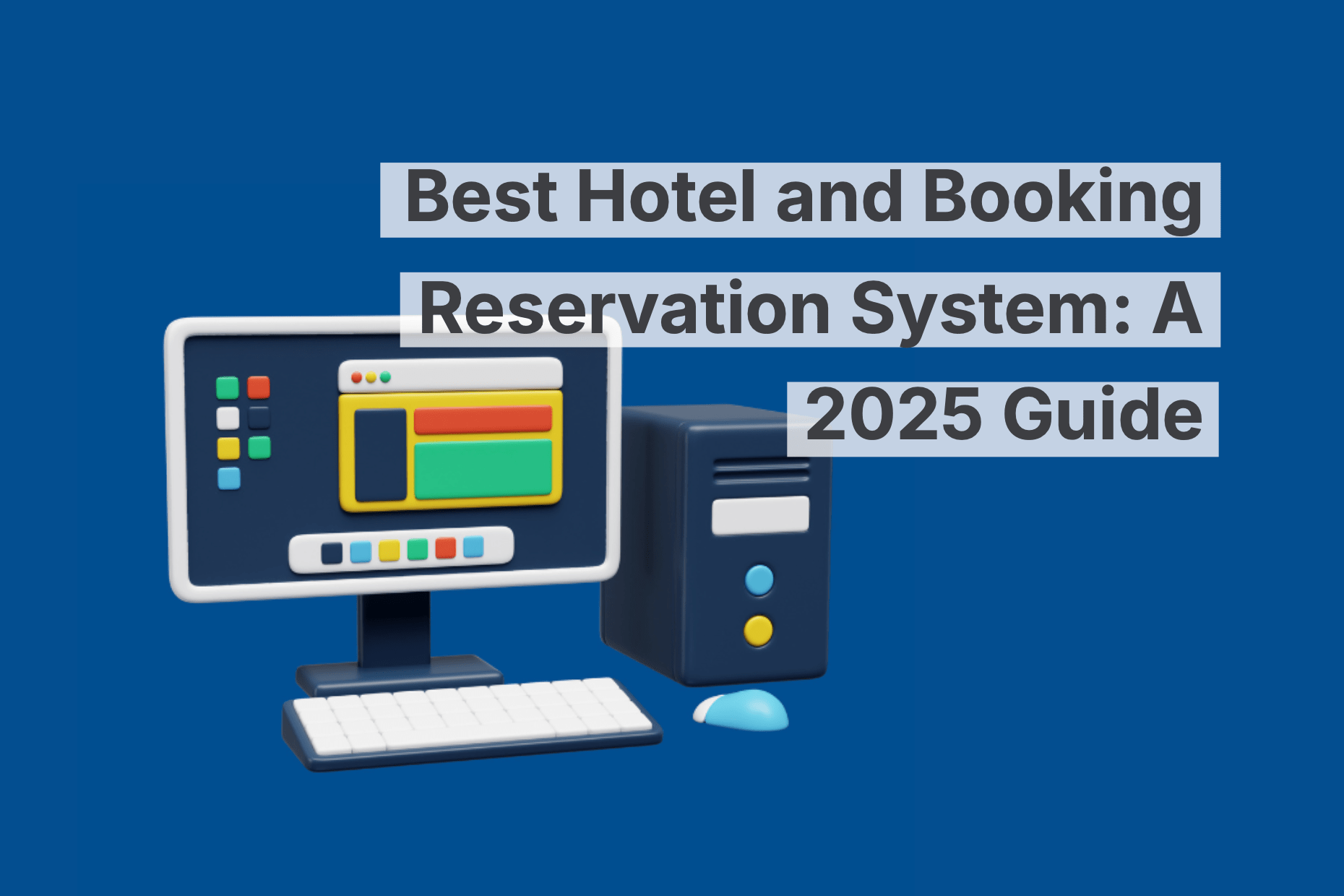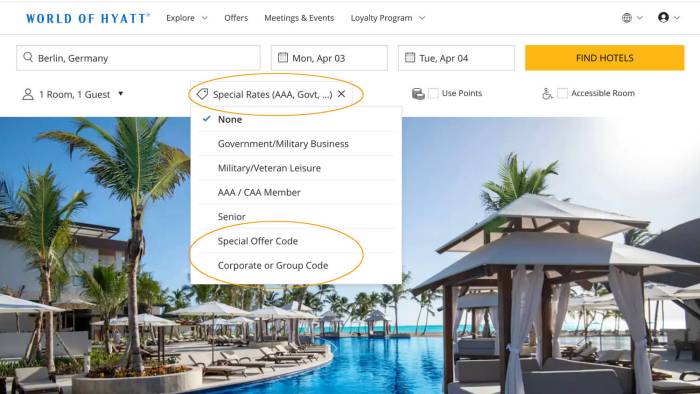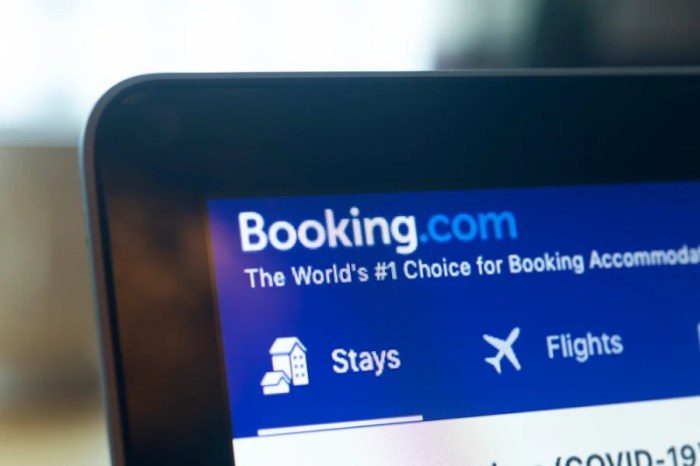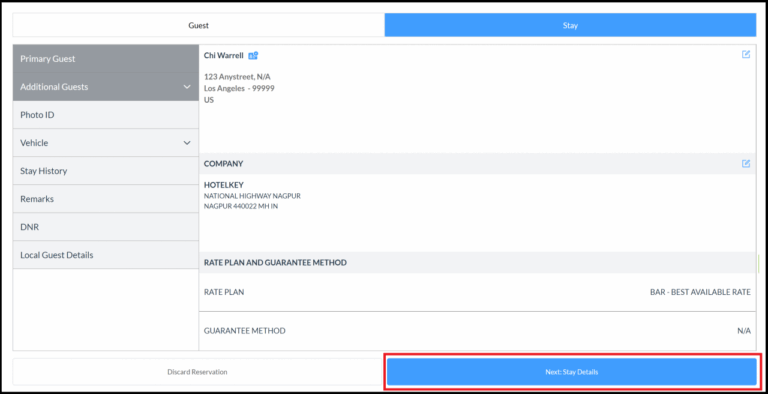Hotel Booking Management A Comprehensive Guide
Hotel booking management is crucial for the success of any hospitality business. It encompasses the entire process from initial inquiry to post-stay feedback, requiring a sophisticated system to handle various aspects effectively. This guide explores the intricacies of managing bookings, from system architecture and booking workflows to data analysis, integrations, customer service, revenue strategies, and crucial security considerations. Understanding these elements is vital for optimizing operations and maximizing profitability.
This guide delves into the key components of a robust hotel booking management system. We’ll cover everything from the initial booking process, including different methods and confirmations, to data analysis, enabling hotels to understand trends and optimize pricing strategies. We’ll also discuss integrating the booking system with other crucial hotel management systems and the importance of exceptional customer service. Ultimately, this comprehensive guide equips readers with a deep understanding of how to create and maintain a successful hotel booking management system.
Hotel Booking Management System Overview

A hotel booking management system (HBMS) is a crucial tool for hotels of all sizes, streamlining the entire booking process from initial inquiry to guest check-out. It acts as a central hub for managing reservations, handling guest requests, and ensuring smooth operations. This system optimizes revenue, enhances guest experience, and provides valuable data insights for informed decision-making.
System Functionalities and Features
A robust HBMS offers a suite of functionalities designed to streamline hotel operations. These functionalities encompass managing room availability, processing bookings, handling payments, and providing guest services. The system allows for real-time updates on room availability, ensuring that accurate information is displayed to potential guests. Furthermore, it enables automated confirmation emails and notifications to both guests and hotel staff. Crucially, it facilitates efficient communication channels between guests and hotel staff, addressing queries and resolving issues promptly.
Types of Users Involved
The HBMS caters to various user roles, each with specific access privileges and functionalities. Hotel staff, including receptionists, managers, and housekeeping personnel, utilize the system for tasks like room allocation, reservation management, and guest communication. Guests use the system to browse available rooms, make reservations, and manage their bookings. Travel agents, often acting as intermediaries, can utilize the system to book rooms on behalf of their clients. The system’s design allows for granular control over user access, ensuring data security and preventing unauthorized actions.
Importance of Real-Time Data Updates
Real-time data updates are paramount in an HBMS. This ensures that room availability is accurately reflected at all times, preventing double bookings and providing guests with the most current information. Instantaneous updates also allow hotel staff to proactively address potential issues, such as last-minute cancellations or unexpected requests. By keeping all data synchronized, the system promotes efficiency and reduces errors, leading to a more streamlined guest experience.
Examples of Popular Hotel Booking Platforms
Numerous platforms facilitate online hotel bookings. Booking.com, Expedia, and Hotels.com are prominent examples. These platforms typically offer comprehensive search tools, allowing users to filter by price, amenities, location, and other criteria. They often integrate with payment gateways, ensuring secure transactions. The platforms also provide detailed property information, including reviews and images, helping guests make informed decisions.
Basic System Architecture Diagram
| Component | Description | Interaction | Example |
|---|---|---|---|
| Guest Interface | A web or mobile application for guests to search, book, and manage bookings. | Interacts with the Reservation Management System and Payment Gateway. | Booking.com mobile app |
| Reservation Management System | Handles reservation data, room allocation, and availability updates. | Interacts with the Guest Interface, Property Management System, and Payment Gateway. | Internal hotel booking software |
| Property Management System (PMS) | Manages hotel information, including room details, rates, and inventory. | Interacts with the Reservation Management System, providing real-time room availability. | Property management software like Opera or Micros |
| Payment Gateway | Processes payments securely for bookings. | Interacts with the Reservation Management System and Guest Interface. | Stripe or PayPal |
Booking Process and Workflow
The online hotel booking process has become increasingly streamlined, offering convenience and efficiency for both guests and hotels. This section details the key steps involved in the process, from initial inquiry to final confirmation, highlighting the various methods for reservation, secure payment, and handling guest requests.
Online Booking Process Steps
The online booking process typically involves a series of steps. Guests can browse available rooms, select dates, and choose desired amenities. A secure online form collects essential information, like guest details, room preferences, and anticipated arrival/departure times. Guests can review and modify their choices before submitting the booking request. This streamlined approach reduces errors and ensures accurate data entry.
Reservation Methods
Several methods are available for making a hotel reservation. Online booking platforms are widely used for their ease of access and immediate confirmation. Phone reservations remain a common option, especially for complex requests or special needs. Direct contact with the hotel’s front desk allows for personalized assistance and quick responses. Some hotels might offer reservations through travel agents, providing specialized assistance and potential discounts.
Secure Payment Gateways
Secure payment gateways are crucial for online hotel bookings. They protect sensitive financial information by encrypting transactions and ensuring compliance with industry security standards. Using trusted third-party payment processors guarantees that guest credit card information remains confidential and transactions are processed safely. This crucial step builds trust and encourages online bookings.
Booking Confirmation and Cancellation Policies
Booking confirmations typically include essential details such as room type, dates, price, and contact information. Clear cancellation policies are essential and should be explicitly stated. These policies often articulate the terms and conditions for cancellations, including potential penalties or refunds. Understanding these policies before finalizing a reservation helps avoid any unforeseen issues.
Handling Guest Requests and Special Needs
Hotels should have clear procedures for handling guest requests and special needs. A dedicated team or designated staff member should be responsible for responding to guest inquiries. Special requests like accessibility accommodations, dietary restrictions, or specific room preferences should be promptly addressed. Hotels should prioritize clear communication to meet guest expectations and provide exceptional service.
Booking Process Flowchart
| Step | Action | Hotel System | Guest |
|---|---|---|---|
| 1 | The guest browses available rooms and selects dates | Displays available rooms and prices | Uses website/app interface |
| 2 | Guest enters guest details, room preferences, and arrival/departure times | Collects and validates data | Completes online form |
| 3 | Guest reviews and confirms booking details | Checks for availability and calculates the total cost | Verifies accuracy and submits |
| 4 | The hotel system processes the booking and sends a confirmation email | Generates booking confirmation and updates inventory | Receives confirmation email |
| 5 | Guest receives a confirmation email with booking details and the cancellation policy | Sends confirmation and policy details | Reviews booking details |
| 6 | The guest makes payment through a secure gateway | Processes payment | Enter payment details |
| 7 | Hotel confirms payment and sends a final confirmation email | Updates the booking status and sends confirmation | Receives final confirmation |
Data Management and Analytics

Source: stamford.edu
A robust hotel booking management system relies heavily on effective data management and analytics. This allows hotels to understand guest preferences, optimize pricing strategies, and improve operational efficiency. Analyzing booking patterns and trends provides valuable insights for informed decision-making, ultimately leading to increased revenue and guest satisfaction.
Collecting and interpreting data is critical for hotels to identify opportunities and address potential issues. By understanding booking patterns, hotels can better allocate resources, anticipate demand, and tailor services to meet guest needs.
Types of Data Collected and Stored
The system gathers a wide range of data points, including guest demographics (age, location, travel dates), booking details (room type, number of guests, special requests), payment information (method, amount), and guest feedback. This comprehensive dataset allows for a detailed understanding of the hotel’s customer base and booking trends. Further data includes historical booking records, room availability, and staff performance metrics.
Importance of Data Security and Privacy
Protecting guest data is paramount. Strict adherence to data privacy regulations (like GDPR) is crucial to maintain guest trust and avoid legal repercussions. Implementing robust security measures, including encryption and access controls, is essential to safeguard sensitive information from unauthorized access. Data encryption and regular security audits are vital to prevent breaches.
Methods for Analyzing Booking Patterns and Trends, Hotel Booking Management
Various analytical methods can be employed to uncover trends. Statistical analysis techniques identify patterns in booking data, revealing peak seasons, popular room types, and high-demand periods. Predictive modeling can forecast future demand and optimize resource allocation. Data visualization tools create clear and concise representations of the collected data, highlighting key insights for decision-making.
Examples of Reports and Dashboards
Generated reports provide a detailed overview of booking trends. Examples include monthly booking summaries, revenue projections, and room occupancy rates. Dashboards visually represent key performance indicators (KPIs), allowing for real-time monitoring of bookings and performance. These dashboards enable managers to quickly identify trends, such as rising demand during specific months or an increase in bookings for a particular room type. A comprehensive dashboard could display various metrics on a single screen, including room occupancy, revenue generated, average booking duration, and customer demographics.
Identifying Peak Seasons and Popular Room Types Using Data
Data analysis allows hotels to pinpoint peak seasons and popular room types. Analyzing historical booking data reveals patterns in demand fluctuations. By examining booking frequency for various room types, hotels can determine which are most in demand. For example, a hotel in a ski resort town might see a significant surge in bookings during the winter months, while a beach resort might experience high demand during summer. Analysis of data also reveals preferred room types, such as family suites or premium rooms, to optimize pricing and inventory management.
Comparison of Data Analysis Tools
| Tool | Features | Pros | Cons |
|---|---|---|---|
| Tableau | Interactive dashboards, data visualization, and data blending | User-friendly interface, extensive features | Can be expensive for large datasets |
| Power BI | Business intelligence tool, data visualization, integration with other Microsoft products | Easy to use, good for the Microsoft ecosystem | Limited customization options for advanced users |
| Qlik Sense | Data discovery, interactive visualizations, and advanced analytics | Flexible, allowing users to explore data in detail | Steeper learning curve than other tools |
| Google Data Studio | Free or low-cost option, data visualization | Cost-effective, easy integration with other Google services | Limited analytical capabilities compared to other tools |
Integration with Other Systems

Source: solutionsuggest.com
Integrating a hotel booking system with other crucial systems enhances efficiency and provides a holistic view of operations. This interconnectedness allows for seamless data flow, automated processes, and improved customer experiences. By connecting with various systems, hotels can optimize their operations, enhance data analysis, and streamline their overall workflow.
Integration with Hotel Management Systems (PMS)
Integrating the hotel booking system with the Property Management System (PMS) is crucial for accurate and real-time data synchronization. This integration ensures that room availability is consistently updated across both systems, preventing overbookings and ensuring that guests are accurately assigned rooms. A well-integrated system minimizes manual data entry, reduces errors, and streamlines the check-in and check-out processes. Furthermore, integrated systems enable seamless transfer of guest information, preferences, and any special requests between the booking system and the PMS. This streamlined approach reduces manual effort and minimizes errors.
Integration with Payment Gateways
Integrating with secure payment gateways is essential for processing transactions efficiently and securely. This integration ensures that payment details are handled securely and according to industry best practices. The booking system can directly communicate with payment gateways to authorize payments, facilitating a smooth and transparent payment process for guests. This integration often includes features like automatic payment capture and reconciliation, minimizing manual work and potential errors.
Integration with Online Travel Agencies (OTAs)
Connecting with Online Travel Agencies (OTAs) allows hotels to expand their reach and access a wider customer base. This integration typically involves using Application Programming Interfaces (APIs) to automatically synchronize room availability, pricing, and other relevant information with various OTA platforms. This automated process ensures that the hotel’s offerings are visible across multiple channels, maximizing exposure and bookings. Furthermore, accurate and up-to-date information across all platforms avoids discrepancies that can lead to confusion for guests and potential revenue loss.
Integration with Customer Relationship Management (CRM) Systems
Integrating with a Customer Relationship Management (CRM) system allows hotels to manage customer interactions effectively. This integration helps hotels to track guest preferences, past bookings, and communication history. This information can be used to personalize future interactions, offer tailored recommendations, and improve customer satisfaction. By linking the booking system with the CRM, hotels can enhance their understanding of customer behavior, allowing for more targeted marketing campaigns and proactive customer service.
API Integrations
Application Programming Interfaces (APIs) are crucial for seamless integrations. They provide a standardized method for different systems to communicate with each other. APIs allow for the exchange of data in a structured format, ensuring accuracy and minimizing errors. This automated exchange streamlines operations and reduces the need for manual intervention. Hotels can leverage the power of APIs to build customized solutions that cater to their specific needs. For example, a hotel could integrate with a loyalty program API to offer points or discounts to returning customers.
Examples of Successful Integrations
Many hotels have successfully integrated their booking systems with other systems. For example, a luxury hotel chain integrated its booking system with a PMS to streamline the check-in and check-out process. This resulted in reduced wait times for guests and minimized administrative overhead for staff. Similarly, another hotel successfully integrated with an OTA to increase online bookings by 30% within the first year.
Pros and Cons of Integration Methods
| Integration Method | Pros | Cons | Suitable for |
|---|---|---|---|
| API Integration | Seamless data exchange, automated processes, reduced manual effort | Requires technical expertise, potential for API errors | Hotels seeking a high level of automation and data synchronization |
| Custom Integrations | Tailored to specific needs, increased control over functionality | High development costs, longer implementation times | Hotels with unique requirements or complex systems |
| Third-Party Integrations | Pre-built solutions, reduced development time | Limited customization options, potential for vendor lock-in | Hotels seeking quick and easy integrations |
Customer Service and Support
Providing exceptional customer service is paramount in a hotel booking management system. Positive interactions directly impact guest satisfaction, loyalty, and ultimately, the hotel’s reputation and profitability. A well-structured customer service approach ensures smooth bookings, resolves issues efficiently, and fosters a positive guest experience.
Importance of Excellent Customer Service
Exceptional customer service is crucial for building lasting relationships with guests. A seamless booking process and prompt assistance during their stay enhance their overall experience, increasing the likelihood of repeat bookings and positive referrals. Effective communication and problem-solving demonstrate a commitment to guest satisfaction, setting the hotel apart from competitors.
Guest Communication and Support Channels
Providing multiple channels for guest communication is vital for accessibility and convenience. Guests should be able to contact the hotel via phone, email, live chat, or a dedicated mobile app. Utilizing these various avenues ensures that guests can connect with support representatives whenever they need assistance, regardless of their preferred method.
Role of Feedback Mechanisms
Implementing robust feedback mechanisms allows hotels to gather valuable insights into guest experiences. Guest surveys, online reviews, and feedback forms provide crucial data for identifying areas for improvement in the booking process and service delivery. Analyzing this data allows hotels to address issues proactively and enhance the overall guest experience.
Handling Guest Complaints and Resolving Issues
Handling guest complaints effectively is a critical aspect of customer service. A proactive approach to resolving issues minimizes negative impacts on the guest experience. Addressing complaints promptly, empathetically, and with a solution-oriented mindset can turn a negative situation into a positive one. A clear escalation process for complex complaints ensures that issues are resolved efficiently.
Effective Customer Service Strategies
Several strategies contribute to effective customer service. These include prompt responses to inquiries, personalized service, proactive communication, and offering tailored solutions to guests’ needs. Maintaining consistent service standards across all channels is critical for a positive brand image.
Customer Service Scenarios and Solutions
| Scenario | Description | Solution | Expected Outcome |
|---|---|---|---|
| Incorrect Booking Information | A guest discovers an error in their booking details, such as incorrect dates or room type. | Quickly identify the booking and correct the details. Provide clear communication on the updated booking confirmation. | Guest receives the correct booking information and confirmation; maintains trust in the booking process. |
| Lost Luggage | A guest reports lost luggage during their stay. | Investigate the loss, offer assistance in filing a claim with the relevant authorities, and provide temporary accommodations or compensation where appropriate. | The guest feels supported, and the issue is resolved to the best of the hotel’s ability. |
| Room Issues | A guest reports issues with their room, such as a malfunctioning air conditioner or a leak. | Inspect the room, arrange for immediate repair or relocation to a suitable alternative room. Provide compensation if applicable. | Guest receives prompt resolution to the issue, ensuring a comfortable and safe stay. |
| Late Arrival or Missed Connection | A guest experiences a delay in their arrival or misses a connecting flight, impacting their check-in. | Communicate with the guest regarding the delay, offer alternative solutions if necessary, and ensure they receive any assistance needed to get to the hotel. | Guest feels valued and accommodated, even during unforeseen circumstances. |
Revenue Management and Pricing Strategies
Effective revenue management is crucial for hotels to maximize profitability. It involves a multifaceted approach that considers various factors, including demand fluctuations, seasonality, and competitor pricing. Optimizing pricing strategies based on these factors is essential for achieving optimal revenue generation.
Hotels can enhance their profitability by implementing sophisticated revenue management systems that track key performance indicators (KPIs) and analyze market trends. By carefully analyzing these trends, hotels can predict future demand and adjust pricing accordingly. A comprehensive understanding of market dynamics is vital for implementing successful revenue management strategies.
Revenue Management Strategies for Hotels
A variety of strategies can be employed to manage revenue effectively. These include dynamic pricing, negotiated rates, and promotional offers. Understanding the market and competitor pricing is critical in formulating successful revenue management strategies.
Optimizing Pricing Based on Demand and Seasonality
Hotels must adapt their pricing strategies to fluctuating demand and seasonal patterns. High demand periods, such as holidays or peak seasons, typically justify higher prices. Conversely, periods of low demand necessitate more competitive pricing to attract bookings. Forecasting demand is essential for proactively adjusting pricing to maximize revenue.
Dynamic Pricing Models
Dynamic pricing models allow hotels to adjust prices in real-time based on factors like occupancy rate, competitor pricing, and demand. This approach can significantly enhance revenue generation by maximizing profitability during peak demand. Real-time adjustments are often essential for staying competitive.
Examples of Successful Revenue Management Techniques
Many hotels have successfully implemented revenue management techniques. These include analyzing historical data to identify patterns in demand, using forecasting tools to predict future demand, and employing dynamic pricing strategies to optimize pricing based on real-time data. For example, a hotel in a popular tourist destination might offer discounted rates during the off-season to encourage bookings and maximize occupancy.
Forecasting Tools in Hotel Revenue Management
Forecasting tools play a critical role in revenue management. These tools analyze historical data, market trends, and competitor pricing to predict future demand and optimize pricing strategies. Accurate forecasting is crucial for effective revenue management, allowing hotels to anticipate market fluctuations and adjust their pricing accordingly.
Pricing Strategies for Different Room Types
| Room Type | High Season Pricing | Low Season Pricing | Promotional Pricing |
|---|---|---|---|
| Luxury Suite | $800-$1200 per night | $500-$800 per night | $400-$600 per night (limited availability) |
| Deluxe Room | $400-$600 per night | $250-$400 per night | $200-$300 per night (limited availability) |
| Standard Room | $200-$300 per night | $150-$200 per night | $100-$150 per night (limited availability) |
| Accessible Room | $250-$400 per night | $180-$300 per night | $150-$250 per night (limited availability) |
Different room types command varying price points, influenced by features and amenities. Pricing strategies must reflect the unique value proposition of each room type.
Security and Compliance

Protecting sensitive guest data and adhering to industry regulations are paramount for a successful hotel booking management system. Robust security measures are crucial to build trust with customers and avoid costly data breaches. This section details the importance of security and compliance, outlining key requirements and best practices.
Importance of Data Security and Privacy
Data security and privacy are paramount in a hotel booking management system. Guest information, including personal details and financial transactions, must be protected from unauthorized access, use, or disclosure. Compromised data can lead to significant financial losses, reputational damage, and legal liabilities. Protecting guest privacy fosters trust and loyalty, ultimately benefiting the hotel.
Compliance Requirements
Adherence to regulations like GDPR (General Data Protection Regulation) is essential. These regulations dictate how personal data is collected, processed, and stored. Hotels must implement procedures to ensure compliance with these regulations, including obtaining consent for data collection, providing transparency to guests about data usage, and ensuring data security measures are in place. Non-compliance can result in hefty fines and legal repercussions.
Security Measures for Sensitive Data
Implementing robust security measures is crucial. These include strong encryption of data at rest and in transit, using multi-factor authentication (MFA), employing intrusion detection and prevention systems, and regularly updating software and security protocols. Regular security audits and vulnerability assessments are also vital. Regular security training for staff is important to prevent human error.
Examples of Security Breaches and Their Impact
Security breaches can have devastating consequences. For example, a breach of guest payment information can result in significant financial losses for the hotel and compromised guest trust. Breaches can also lead to reputational damage and costly legal battles. Thorough incident response plans are essential to mitigate the impact of such events.
Authentication Methods
Different authentication methods can be employed to enhance security. These include password-based authentication, multi-factor authentication (MFA), biometrics (fingerprint or facial recognition), and token-based systems. Implementing strong authentication methods helps verify the identity of users and prevent unauthorized access.
Security Protocols and Effectiveness
| Security Protocol | Description | Effectiveness (Low/Medium/High) | Comments |
|---|---|---|---|
| Strong Passwords | Enforce complex passwords with a minimum length and character types. | Medium | Requires user discipline and enforcement. |
| Multi-Factor Authentication (MFA) | Requires multiple forms of verification (e.g., password, code from app). | High | Significantly increases security against unauthorized access. |
| Data Encryption | Encrypting data both in transit and at rest. | High | Crucial for protecting sensitive information from unauthorized access. |
| Firewall | A network security system that controls incoming and outgoing network traffic. | Medium | Provides a basic layer of protection, but needs constant monitoring and updates. |
| Regular Security Audits | Periodic assessments of security systems and procedures. | Medium | Identifies vulnerabilities and allows for proactive remediation. |
| Intrusion Detection/Prevention Systems (IDS/IPS) | Systems that monitor network traffic for malicious activity. | High | Detects and blocks suspicious activities in real-time. |
Closing Notes
In conclusion, effective hotel booking management requires a multifaceted approach. From the technical infrastructure to customer interactions and revenue optimization, each aspect plays a critical role in a hotel’s success. This guide provided a comprehensive overview, highlighting the key elements involved in a successful hotel booking management system. By understanding and implementing these strategies, hotels can streamline operations, enhance customer satisfaction, and ultimately achieve greater profitability.





